Embroidering on stretchy materials presents a unique set of challenges, demanding precision and specialized techniques to achieve successful results.
Whether working with jersey, spandex, or other elastic fabrics, understanding the intricacies of the process is essential.
This artful endeavor requires a thoughtful approach, from the meticulous preparation of the fabric through washing and pressing to the careful selection of needles and stitches that accommodate the material’s inherent stretch.
Whether employing machine or hand embroidery, the journey involves balancing, maintaining tension, and preventing distortion.
This guide explores the step-by-step intricacies of embroidering on stretchy materials, offering insights into the nuanced world of textile embellishment.
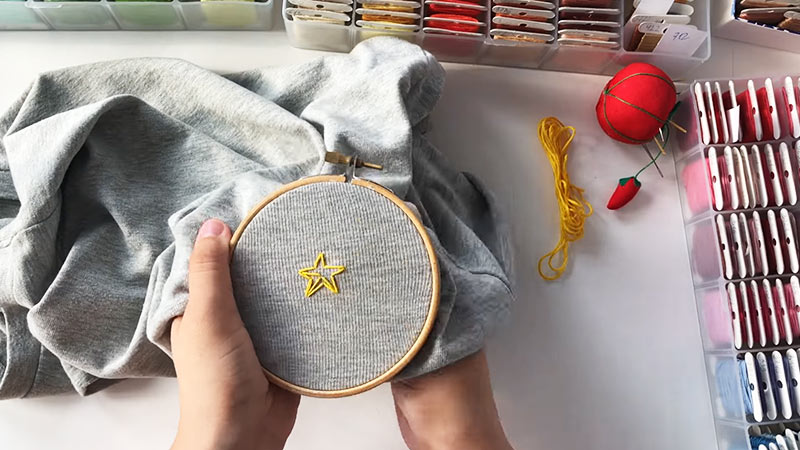
How to Embroider Stretchy Material by Machine?
Embroidering on stretchy materials can be a bit challenging compared to working with more stable fabrics, but with the proper techniques and tools, you can achieve beautiful and durable results.
Here’s a step-by-step guide on how to embroider on stretchy materials:
Materials and Tools:
- Stretchy Fabric.
- Embroidery Hoop.
- Stabilizer.
- Embroidery Needles.
- Embroidery Floss or Thread.
- Water-soluble or Tear-Away Stabilizer.
Step-by-Step Guide:
Prepare the Fabric
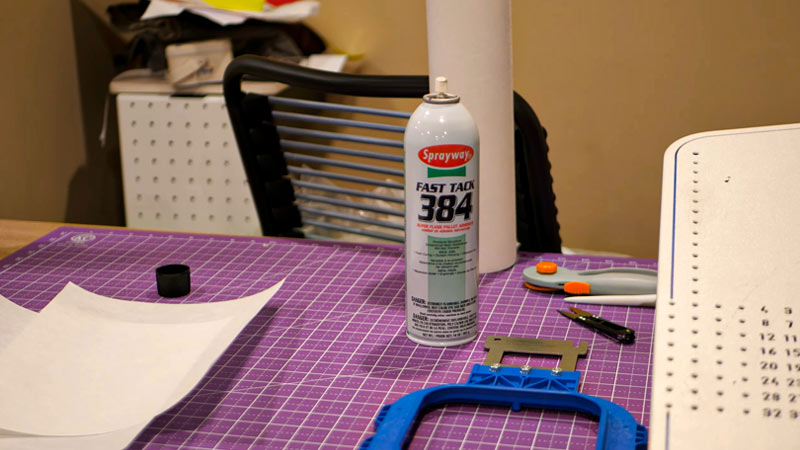
Washing and pressing the fabric are crucial steps to ensure a smooth embroidery process. Washing removes any sizing or residues that might affect the fabric’s texture or interfere with the embroidery machine’s performance.
Pressing the fabric helps eliminate wrinkles and ensures that the material is in its natural state before embroidery.
Take care not to use excessive heat, especially if working with synthetic stretch fabrics, to prevent unintentional damage.
Hoop the Fabric
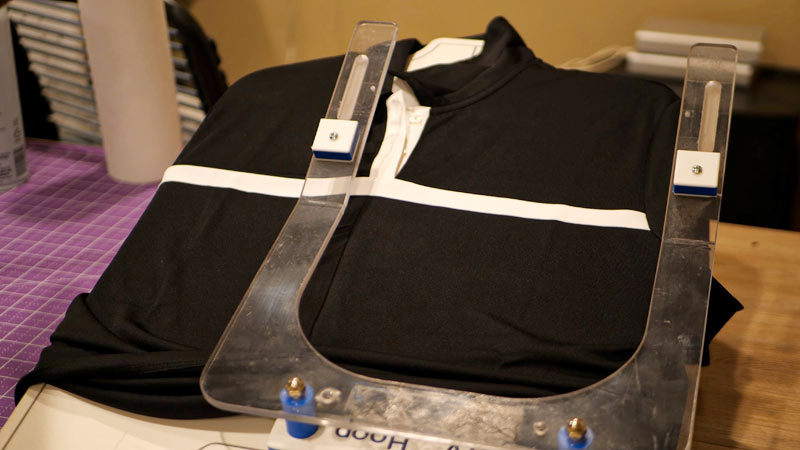
Proper hooping is essential for achieving clean and precise embroidery on stretchy materials. When hooping, place the stabilizer on the wrong side of the fabric.
This provides a foundation for the stitches and minimizes stretching during embroidery.
Hoop the fabric and stabilizer together, ensuring the fabric is taut but not overly stretched.
Adjust the tension of the hoop to strike a balance between securing the fabric and preventing distortion.
Choose the Right Needle
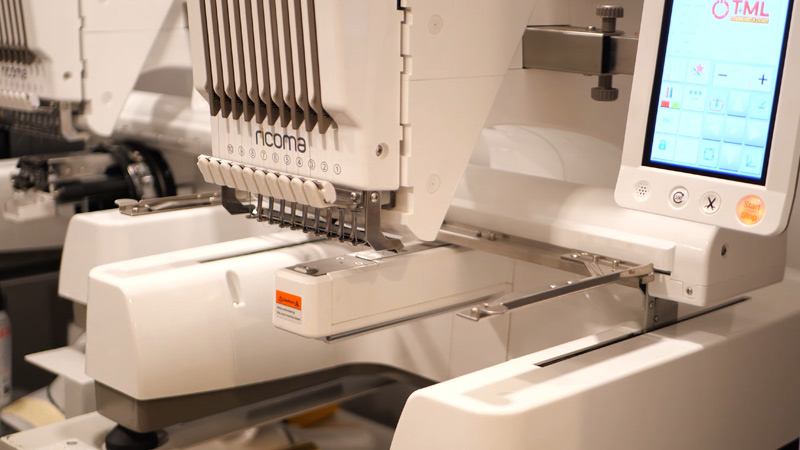
Selecting the correct needle is a critical factor in embroidering on stretchy materials. Opt for a ballpoint or stretch needle, as these have rounded tips that smoothly navigate between the fabric fibers without causing damage.
Choosing a smaller needle size is often advisable for delicate or lightweight stretch fabrics, ensuring precise stitching without compromising the fabric’s integrity.
Select the Right Stitch
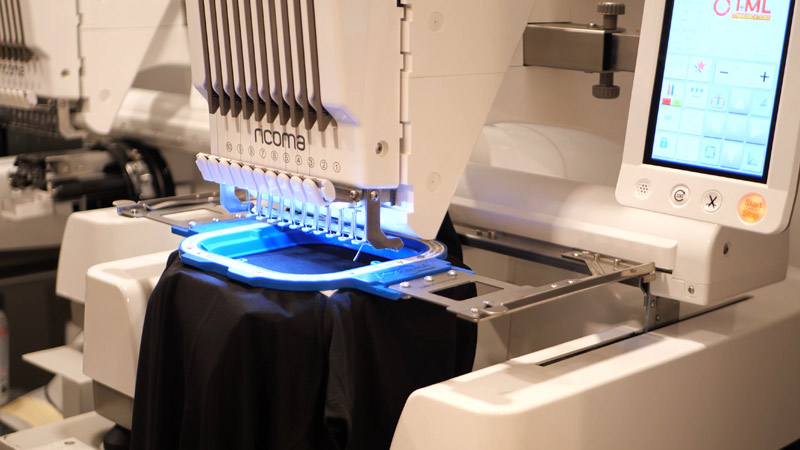
Choosing stitches that accommodate the stretch of the fabric is essential for a successful embroidery outcome. Satin, running, and other simple stitch types work well on stretchy materials.
These stitches provide flexibility and prevent the embroidery from becoming stiff, allowing the fabric to maintain its natural stretch and drape.
Test on Scrap Fabric
Before committing to your actual project, it’s wise to test the chosen design on a scrap piece of the same fabric. This allows you to assess the embroidery’s tension, stitch quality, and overall appearance.
Adjust the machine settings if necessary to ensure the stitches look right and the fabric remains stable during embroidery.
Embroider Slowly
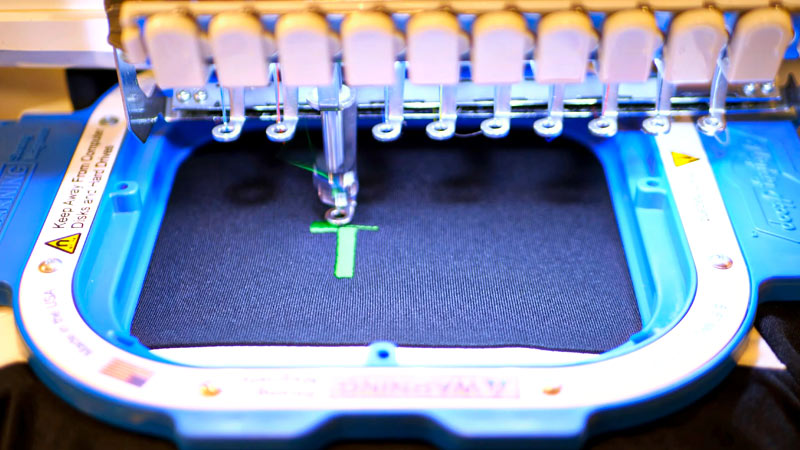
It’s advisable to slow down the machine speed during the embroidery process to prevent stretching or distortion.
This slower pace provides better control, allowing the machine to execute the chosen stitches accurately without putting undue stress on the stretchy fabric.
Use Additional Stabilizers
For designs that require extra stability, consider adding a layer of water-soluble or tear-away stabilizer on top of the fabric.
This additional support helps prevent stitches from sinking into the stretchy material and ensures that the embroidery maintains its shape and definition.
Carefully Remove Stabilizers
Once the embroidery is complete, take care when removing stabilizers from both the front and back of the fabric. Ensure all remnants are gently peeled or torn away, leaving behind a clean and polished embroidered surface.
Press Gently
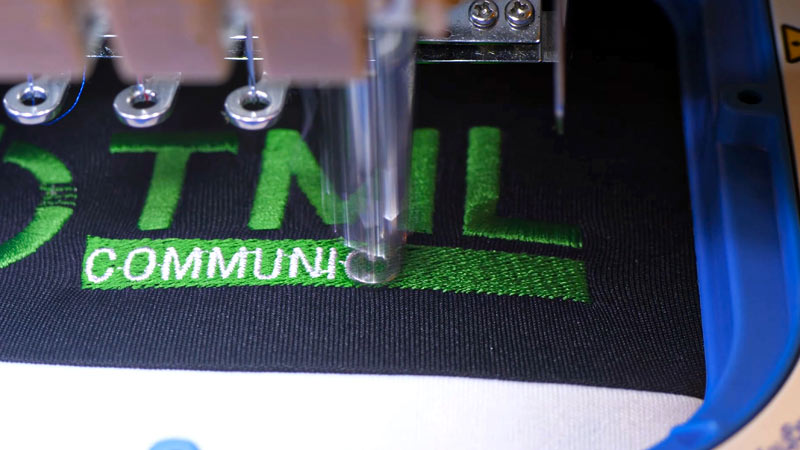
After completing the embroidery, gently press the embroidered area to set the stitches and improve the overall appearance.
Use a pressing cloth to protect the fabric, especially when using heat-sensitive synthetic stretch fabrics.
Avoid excessive heat, as it can cause damage or distortion to the embroidered design and the underlying fabric.
How Do You Embroider on Stretchy Fabric by Hand?
Embroidering on stretchy fabric by hand requires a different approach than working with stable fabrics. Hand embroidery allows for greater control, making it possible to adapt to the material’s elasticity.
Here’s a step-by-step guide on how to hand embroider on stretchy fabric:
Materials and Tools:
- Stretchy Fabric.
- Embroidery Hoop.
- Embroidery Needles.
- Embroidery Floss or Thread.
- Stabilizer.
Step-by-Step Guide:
Prepare the Fabric
Washing and pressing the fabric are foundational steps in ensuring a successful hand embroidery project on stretchy materials.
When washing the fabric, use a gentle detergent to remove any sizing or residues that might affect the embroidery process.
Be mindful of the fabric’s care instructions, especially if working with delicate or synthetic stretch fabrics.
Press the fabric while it is still slightly damp, using a low to medium heat setting. This process eliminates wrinkles and helps the fabric return to its natural state, making it more receptive to hand embroidery.
Select the Right Needle
Choosing an appropriate needle is crucial for successful hand embroidery on stretchy fabric. Opt for a needle specifically designed for stretch fabrics, such as a ballpoint or rounded-tip needle.
These needles smoothly glide between the fibers without causing damage or snagging. Additionally, when working with delicate or lightweight stretch fabrics, use a smaller needle size to ensure precise stitching without compromising the fabric’s integrity.
Hoop the Fabric
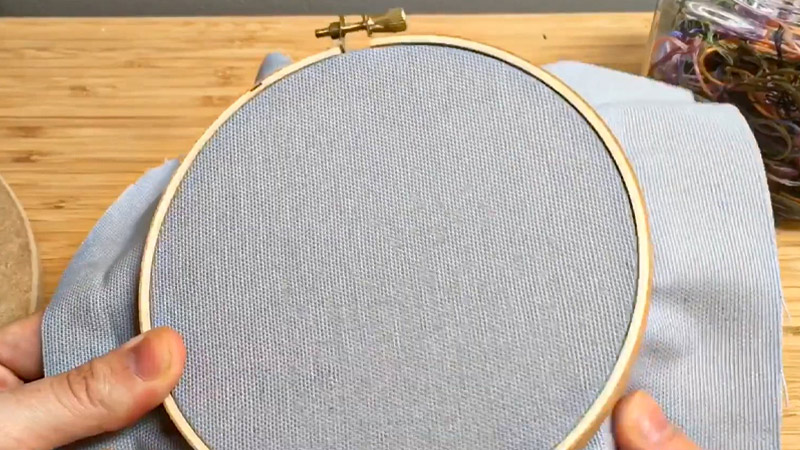
Using an embroidery hoop provides stability and helps maintain consistent tension while embroidering on stretchy fabric.
When hooping the fabric, ensure it is taut but not overly stretched to prevent distortion. Gently tug the fabric to achieve the correct tension within the hoop.
If possible, select a hoop size that closely matches the dimensions of your embroidery project, as this minimizes unnecessary stretching and distortion.
Choose the Right Stitch
Selecting appropriate stitches is crucial for accommodating the stretch of the fabric. Opt for flexible stitches like chain stitches, backstitches, or split stitches, allowing the fabric to maintain its natural elasticity.
Experiment with different stitch lengths and densities to find the combination that complements the specific stretchiness of your fabric.
Thread Selection
Carefully choose your embroidery thread to complement the stretchy nature of the fabric. Use embroidery floss or thread that is lightweight and flexible.
Avoid threads that are too thick, as they may contribute to stiffness in the embroidered area, limiting the fabric’s stretch. Experiment with thread colors and textures to enhance the overall aesthetic of your hand embroidery.
Start with a Small Test
Before diving into your main embroidery project, stitching a small test area on a scrap piece of the same fabric is essential.
This test allows you to evaluate the tension, stitch quality, and overall appearance of your chosen stitches on the stretchy material. Adjust your technique or stitch selection as needed to achieve the desired results.
Embroider Slowly and Mindfully
Hand embroidery is a craft that benefits from a steady hand and focused attention. Embroider slowly, paying close attention to the tension of each stitch.
Be mindful of the fabric’s stretch, ensuring it remains smooth and flat while you work. Take breaks as needed to maintain precision and prevent unnecessary fabric distortion.
Use Stabilizer
Consider using a water-soluble or tear-away stabilizer if your stretchy fabric requires additional stability.
Place the stabilizer underneath the fabric or on top, depending on your preference and the specific requirements of your project.
This additional support helps maintain the integrity of the stitches and prevents them from sinking into the stretchy material.
Finish with Care
Upon completing the hand embroidery, carefully remove the fabric from the hoop. If you used a stabilizer, follow the manufacturer’s instructions for its removal.
Press the embroidered area on the wrong side with a pressing cloth to set the stitches without subjecting the fabric to excessive heat. This final step ensures a polished and professional finish to your hand-embroidered creation.
FAQs
Can You Embroider Stretchy Fabric?
Yes, you can embroider stretchy fabric using specialized needles, choosing flexible stitches, and employing proper hooping and stabilizing techniques to prevent distortion and achieve successful results.
Can I use a regular needle for embroidering on stretchy fabric?
No, using a needle specifically designed for stretch fabrics is recommended, such as a ballpoint or rounded-tip needle.
Why is washing and pressing the fabric essential before embroidery?
Washing and pressing remove sizing and residues that could affect the embroidery process. Pressing the fabric ensures it is in its natural state, promoting better stitch adherence.
To Recap
Embroidering on stretchy materials demands a delicate balance between technique and precision.
Through meticulous preparation, including washing, pressing, and selecting the right tools such as specialized needles, embroiderers can navigate the challenges posed by elastic fabrics.
Whether using machine or hand embroidery, choosing stitches is crucial in preserving the fabric’s stretch and ensuring a professional finish.
Testing on scrap fabric allows for adjustments, while stabilizers offers additional support when needed.
Embroidering slowly and mindfully becomes an art, resulting in designs that not only adorn but also respect the unique qualities of stretchy materials, creating garments or embellishments that seamlessly combine form and function.
Leave a Reply